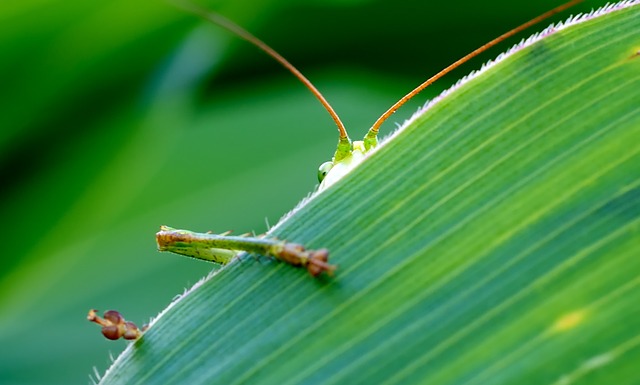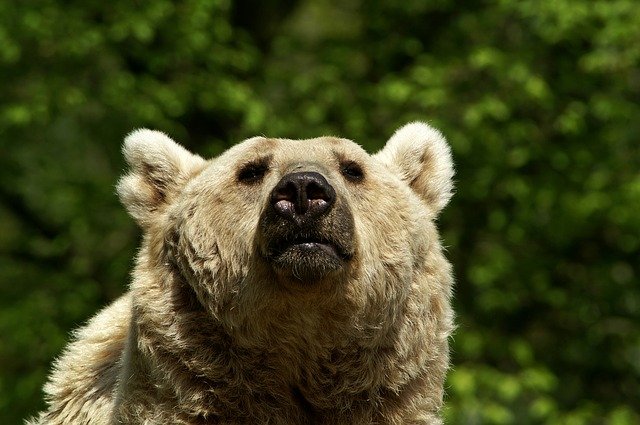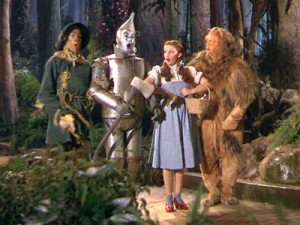Mindfulness, Negativity Bias and Wellness Change — Part One
Most of us have heard the word mindfulness. It’s made the cover of Time magazine, it’s now being practiced by the NFL (if you’re a pro running back, you can now be mauled by a calm and present linebacker) , everyone who follows Oprah or Dr. Oz, the US Marines (semper om),  apparently a very small minority in Congress, and countless Hollywood celebs. This last list includes (I’m not kidding) Angelina, Giselle, Demi, and Arnold. Please get on board, Lindsay. Guys with serenity-soaked names like Deepak Chopra (Oprah should marry him; think about it…) and Jon Kabat-Zinn have made it popular and accessible to people like my mother, who can now use it to be more aware of my faults. That’s right, mine, not hers. Just kidding, Mom.
apparently a very small minority in Congress, and countless Hollywood celebs. This last list includes (I’m not kidding) Angelina, Giselle, Demi, and Arnold. Please get on board, Lindsay. Guys with serenity-soaked names like Deepak Chopra (Oprah should marry him; think about it…) and Jon Kabat-Zinn have made it popular and accessible to people like my mother, who can now use it to be more aware of my faults. That’s right, mine, not hers. Just kidding, Mom.
This post (part one) will focus on negativity bias, a basic, root-cause impediment to wellness change. The next post (part two) will cover how mindfulness can help address negativity bias and clear the path to wellness change.
Mindfulness defined…
Mindfulness deserves the credibility it’s received, and this article explains the basics. For our purposes, I’ll define it simply as judgment-free awareness of body-mind and environment that advances learning around everyday choices to foster behavioral change. If that’s too complicated, here’s the simpler version: you gently pay attention to everything without labeling good or bad and it causes you to feel and act better. If that’s still too complicated, how about “Wake Up, Feel Fine“, which also generates the awesome acronym, “WUFF”.
By the way, mindfulness — under different names like the Sanskrit “Smriti” — has had credibility for more than a thousand years. But we in the west — and particularly in the US — have inherited philosophical/religious/ethical systems which don’t really line up with mindfulness, like the Puritan ethic with all of its judgment. And then we had to figure out how to apply Smriti to something sexy like a body that doesn’t age or non-violent violence. “You’re welcome, grasshopper”, says the television network executive who brought us David Carradine and “Kung Fu”. Then we chose “mindfulness” as a descriptor instead of “Smriti” because no-one knows how to pronounce “Smriti”.
says the television network executive who brought us David Carradine and “Kung Fu”. Then we chose “mindfulness” as a descriptor instead of “Smriti” because no-one knows how to pronounce “Smriti”.
Smirti and Negativity Bias are here to stay. Sort of.
However we got it, mindfulness is now here to stay. How and why does it matter to wellness? Mindfulness matters because it’s the antidote to negativity bias and other big hurdles we inevitably run into when trying to make wellness changes. Any big change — like reforming your diet or adding in exercise or managing work-life stress — will invoke negativity bias and bring it to the surface. Most changes benefit from awareness of (mindfulness) and direct attention to negativity bias. But what is it?
Negativity bias is the psychological phenomenon of unpleasant stuff sticking to our brains like Velcro while the positive stuff slides out of memory like a fried egg off of a Teflon omelette pan. We remember the ugly experiences and are more oriented around avoiding them than seeking the pleasant ones. Hence the genesis of the expressions, “once bitten, twice shy” or “hard to get back on the horse” or “one bad apple” or the Russian aphorism “One spoon with tar can ruin a honey jar” (who does that???) or my Dad’s expression, “One ‘aw, crap’ wipes out a hundred ‘atta-boys'”. And there are TONS of official and high-quality aw-crap studies to verify this collective predisposition. You see it play out every day: at work, at home, in the bathroom for half an hour waiting while your spouse is washing the dishes.
If you think you might be impervious to negativity bias and related hurdles (that mindfulness helps to knock down), you would be wrong. These hurdles — and there are environmental ones, too, but they’re not as big — are built into our genes and our evolutionary heritage; no escape. Better to acknowledge them and disarm them, rather than dismiss them or run away from them or try to knock them down with brute force. Think David Carradine and Kung-fu, grasshopper. Change hurdles are the disease and mindfulness is the cure. Now and first, more on the disease….
The Ugly Childhood of Negativity Bias and It’s Bad Influence, Simulator
To understand why negativity bias interferes with wellness change and how mindfulness is part of the cure, let’s look at how/why we acquired it (our evolutionary heritage). It’s all about survival and mother nature advancing early humans to baby-makin’ age.
- If you’re an early human, it’s better if your brain remembers where the grizzly bear almost killed you as opposed to where you found that nice little blueberry patch.
 If you remember the former, you avoid getting horribly mangled and eaten. Definitely a survival prerequisite. If you remember the blueberry patch, it’s nice and you imbibe a little sweet anti-oxidant. But avoiding the bear is a higher priority from Mother Nature’s point of view (evolution). Note however, that we do both. We are wired to avoid the ugly and seek/cling to fleeting pleasure, both of which can and do work against us with wellness change. We approach opportunity while avoiding threats. A brain with the second one dominating keeps its host alive longer.
If you remember the former, you avoid getting horribly mangled and eaten. Definitely a survival prerequisite. If you remember the blueberry patch, it’s nice and you imbibe a little sweet anti-oxidant. But avoiding the bear is a higher priority from Mother Nature’s point of view (evolution). Note however, that we do both. We are wired to avoid the ugly and seek/cling to fleeting pleasure, both of which can and do work against us with wellness change. We approach opportunity while avoiding threats. A brain with the second one dominating keeps its host alive longer.
- We want to stabilize what keeps changing. Change is stressful and a negative experience we want to avoid. In the modern world, we have all kinds of ways of dealing with this: psychotherapists, change management consultants (who tell us we’re doomed and then want thousands of dollars to fix it), insurance policies, etc. There are, of course, exceptions; many women like hair change, just as men will experiment with beer and pizza toppings. But in the old world — where bears loved eating blueberry-flavored humans — avoiding stressful change meant (again) survival; it kept internal and external systems stable. In the modern world, we have co-opted this deep impulse and applied it to things like public speaking, or changing work routines, or moving off the couch when you’ve only seen six out of ten ‘Game of Thrones’ episodes from season three.
- We see things as separate which are actually connected. This is part of negativity bias, just another evolutionary inheritance and a willing dance partner with negativity bias. What’s falsely separated? You and me, me and the world, the past and present and future, my thoughts and my body, me and my car keys. This is the by-product of two phenomena: 1) our five senses confirm that we are separate from everything outside us and that it’s a subject-object world; and 2) the need for our brain to “replay” or “forecast” discrete events in order to draw abstract conclusions that will enhance our survival prospects. It revisits the past and jumps forward to protect us (ostensibly). “Where did I see that bear again and what did I do?” <past> What do I do if I see it again?” <future> Different researchers and authors (one great one is Rick Hanson) have dubbed this our internal simulator. The simulator enables an outlook and behavior which detracts both from present experience and sees as separate things or activities which are more accurately viewed as connected or one (mind-body).
Of course, Mother Nature had the best of intentions. In the early hominid world, these traits guaranteed survival but did not optimize stress-free wellness. Mother Nature (evolution) cares a lot less about how you feel than getting you to reproduce. In the present day world, we can all reproduce with negativity bias because: 1) the grizzly bear type of danger doesn’t really exist anymore and; 2) modern medicine has removed reproductive obstacles and thwarted evolutionary pressure. So while negativity bias is not beneficial in some ways (and is in others), evolution is not going to remove it from the gene pool. We’re stuck with it.
How Mother Nature (and her children, negativity bias and simulator) mess with Positive Wellness Change
Consider these examples of negativity bias mucking with wellness change, or the prospect of it:
- On Sunday night your higher self sets the alarm clock for 5:00 am on Monday morning to start your new exercise program. You are super-psyched; you go to bed dreaming of your athletic, trim new physique and whatever-else-I-won’t-conjecture. But the person who wakes up at 5:00 am is not the higher self. It’s the lower, negativity biased self who’s pissed off because of sleepus-interruptia.
 From the evolved brain’s point of view, there’s no opportunity here; only mild threat, discomfort and change (very quick memories of past muscle pain and being oxygen deprived). So what do you? You take your fist — or your bedside handgun if you live in a Florida trailer park — and you end the alarm clock noise.
From the evolved brain’s point of view, there’s no opportunity here; only mild threat, discomfort and change (very quick memories of past muscle pain and being oxygen deprived). So what do you? You take your fist — or your bedside handgun if you live in a Florida trailer park — and you end the alarm clock noise. - The couch potato in front of the tube, munching on a bag of Cape Cod Kettle Cooked Sweet and Spicy Jalapeño Potato Chips (of course I don’t eat these things…). His higher brain knows that there’s time to exercise, but what does the lower brain think? Is this an opportunity? Yes. Plenty of concentrated salt, fat and sugar, rare in the early human world where we evolved. Are there any threats? Not immediately from the lower brain perspective, and in fact, the food has a short term stress blunting effect. From the primitive brain point of view, no threat to avoid and a nice opportunity. The blueberries without the bear. Perfect wellness inertia.
- You’ve tried to lose weight in the past, and were successful in the short term but it didn’t last. The diet-exercise regimen was tough and painful. And gaining the weight back made you miserable. What do you remember with the greatest clarity/intensity? Probably not the mini-victories with weight-loss or the strength gains or the nutritional learnings. Your memory or “feeling tone” is probably based on the grueling process with no long term results. This is negativity bias. And when you think about starting over (simulator), you might even have a sense of fatalism; “My past programs and the memories of failing hurt. I don’t want to try again….”
- You know that even a little exercise and eating right will help you. But your job is high stress and you feel there’s a lot at stake (losing your job, losing the respect of your peers, etc). And domestically you don’t want to neglect your family by never being around or falling down as breadwinner. So when there’s an opportunity to exercise or prepare a healthy meal — even one, we’re not talking about a regular routine — the fears and negativity bias that swirl around these areas (job and domestic life) blunt your ability to think clearly and cause you to skip the healthy activity in favor of something else. Stress and fear don’t provide a healthy backdrop for creating new routines.
The themes here which undo or threaten wellness change are simple. We either:
- Create paper-tigers out of exercise and diet changes which are actually beneficial, and then avoid them. Negativity bias and simulator are behind these thoughts and behaviors.
- Or let other stresses/fears dull our higher-level decision-making around wellness activity.
- Or we gravitate toward threat-less “opportunities” (like potato chips on the couch); trojan horses that can truly mess with our health and happiness.
- Or — typically — all three.
So maybe you don’t like animal metaphors (bears, tigers and horses), but the takeaways don’t change. You’ll encounter some variation of negativity bias and its effects if you’re trying to make wellness changes (or most change). And we often don’t deal with negativity bias effectively because this cognitive path/process happens in a flash and then impacts our choices and behavior without real awareness. This is where mindfulness comes in. See part two for that.
![]()

